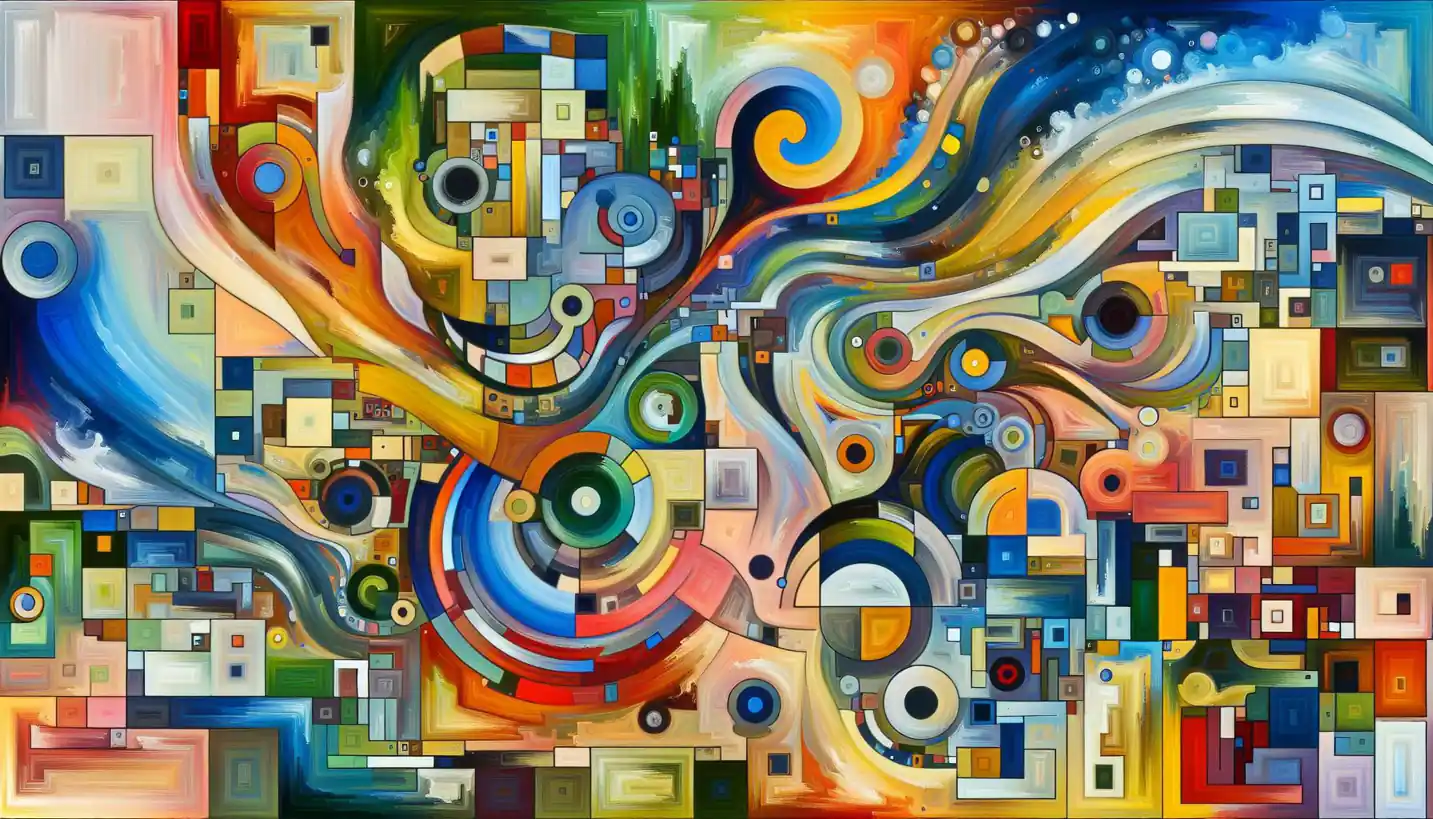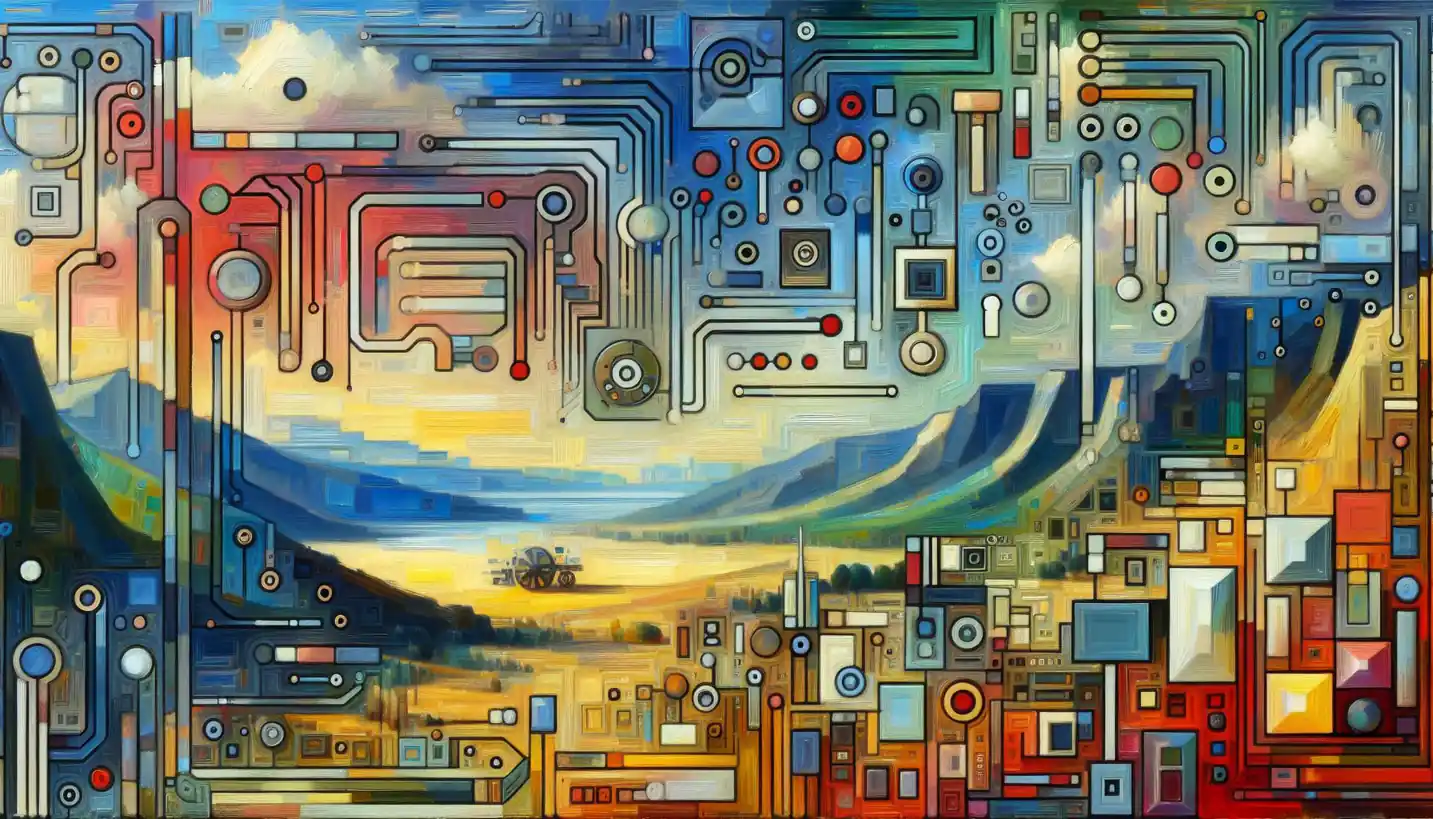· Art · 5 min read
Motif: The Secret Language of Film and Art
Motifs are recurring elements that convey deeper meanings in films. Explore how these symbolic details enrich and connect the storytelling experience.

Motifs are all around us. When we watch a movie or gaze at a painting, these recurring elements gently guide us to a deeper understanding. Think of motifs as the repeating chorus in a song, subtly reinforcing themes and emotions without needing direct explanation.
Why are motifs so powerful? Let’s dive into this fascinating concept found in film and video, as well as other art forms.
Motifs in Film and Video
In the world of film, motifs are visual or auditory elements that appear throughout a movie to reinforce themes and emotions. Imagine you’re watching a film, and every time a character is about to experience a significant change, you hear a particular melody. That melody is a motif, and it’s working silently to deepen your connection to the story.
Consider the famous “Jaws” theme—those two notes that send shivers down your spine. Every time that music plays, it hints at the lurking danger, keeping you on the edge of your seat. By the end of the movie, those simple notes convey fear and tension, even without showing the shark.
Beyond just sound, motifs can be visual. Take the color red in “Schindler’s List.” Red is nearly absent throughout the black-and-white film except for a little girl’s coat. This splash of red highlights innocence lost amidst the horrors of war, an emotional touchstone for viewers.
Motifs Across Different Art Forms
But motifs aren’t just for films. They thrive in literature, paintings, and even architecture. In art, a motif can be a repeated shape or pattern that echoes throughout a piece. Think about Van Gogh’s swirling skies or Escher’s impossible staircases. These repetitive designs draw us in, urging us to explore deeper and find meaning.
In literature, motifs can be symbols, phrases, or colors that pop up repeatedly to add depth. They whisper the story’s themes without shouting. For example, in F. Scott Fitzgerald’s “The Great Gatsby,” the recurring green light symbolizes unreachable dreams and the American Dream’s complex nature.
Why Do Artists Use Motifs?
Motifs are like invisible threads that weave through stories and artworks, creating a cohesive experience. But why do artists use them?
Firstly, motifs help reinforce themes subtly. Instead of directly stating an idea, creators can let a motif hint at it, allowing audiences to draw their conclusions. It’s a way of showing rather than telling.
Secondly, motifs help evoke emotions. They can silently influence how we feel without us even realizing it. For instance, a soft lullaby playing in a scene might evoke nostalgia or comfort, drawing viewers into the character’s emotional world.
Lastly, motifs help with memory. They make a film or artwork more memorable by tying recurring elements to key themes. Next time you watch a movie and notice a repeated symbol or sound, you’re likely to remember the associated emotions and themes long after the credits roll.
The Magic of Finding Motifs
Finding motifs can be like a fun game of hide and seek. As you watch a movie or observe a painting, keep an eye out for anything that seems to pop up more than once. It might be a color, a sound, or a specific object.
Think about what these repetitions mean. Is there a deeper significance, or are they just random choices? How do they enhance your understanding of the story or artwork?
Take “Star Wars,” for example. The motif of the Force theme, a sweeping piece of music, embodies the battle between good and evil across the galaxy. Each time it plays, it connects characters like Luke and Rey to their larger destinies.
How to Use Motifs
If you’re a budding filmmaker, writer, or artist, using motifs can add layers to your work. Start by identifying the core themes you want to explore. Then, think about visual or auditory elements that can subtly reinforce these ideas without overpowering the main narrative.
Remember, subtlety is key. A motif should gently enhance the experience, not distract from it. Think of it as a background heartbeat, pulsing quietly but vitally through your work.
Incorporating motifs can also make your art feel more tightly woven. They can work like knots in a tapestry, holding various threads of your story together in a seamless way.
Motifs and Audience Engagement
Using motifs can spark curiosity among audiences. They might find themselves wondering about the significance of repeating elements and engage more deeply with the work as they form their interpretations. This engagement fosters a richer, more interactive experience.
Audiences tend to enjoy piecing together thematic puzzles, and motifs can be the breadcrumbs leading them through the narrative or artwork’s intricate layers. By offering just a hint rather than the full picture, you invite audiences on a journey of discovery.
The Future of Motifs
As digital media evolves, so does the use of motifs. Interactive films, virtual reality experiences, and digital art installations offer new spaces for motifs to thrive. These mediums provide fresh platforms where motifs can be experienced in immersive and innovative ways.
Imagine stepping into a virtual reality painting where every corner you explore echoes a specific motif, slowly revealing the piece’s narrative. As technology advances, the potential for motifs to enrich our experiences in unexpected ways continues to grow.
In conclusion, motifs in film and art serve as the subtle ties that bind the layers of narrative and emotion together. They add richness, evoke emotions, and create memorable experiences. Whether you’re an admirer or creator of art, understanding and exploring motifs can deepen your appreciation and engagement, opening your eyes to the hidden symphony that plays beneath the surface.


